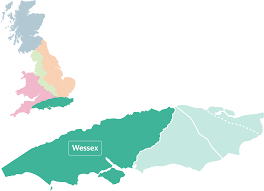
The Importance of Choosing the Right Route for Your Journey
When embarking on a journey, whether it’s a road trip, a hike, or a train ride, one of the key decisions you’ll need to make is selecting the right route. The route you choose can significantly impact your overall experience, safety, and efficiency of your journey.
Choosing the best route involves considering various factors such as distance, terrain, traffic conditions, and points of interest along the way. A well-planned route can save you time, fuel, and unnecessary stress during your travels.
For road trips, selecting the most scenic or least congested route can enhance your enjoyment of the journey. Planning stops at interesting landmarks or attractions along the way can turn a simple drive into a memorable adventure.
When it comes to hiking or trekking, choosing a route that matches your fitness level and experience is crucial for a safe and enjoyable outdoor experience. Factors such as elevation gain, trail conditions, and weather forecasts should all be taken into account when planning your hike.
For train journeys, selecting the right route can make a difference in terms of travel time and comfort. Some routes offer breathtaking views of landscapes or pass through historic towns, adding an extra layer of enjoyment to your train travel experience.
In conclusion, whether you’re planning a road trip, a hike, or a train journey, taking the time to carefully choose the right route can make all the difference in how you experience your travels. So next time you embark on an adventure, remember that the route you take is just as important as the destination itself.
Frequently Asked Questions About Route Planning with Google Maps
- What is route in Google Maps?
- Can Google plot a route?
- How can you plan your route?
- What is the best route planner?
What is route in Google Maps?
In Google Maps, a route refers to the specific path or directions provided by the application to help users navigate from one location to another. When you input your starting point and destination, Google Maps calculates the most efficient and convenient route based on factors such as traffic conditions, road closures, and real-time data. The route displayed typically includes step-by-step directions, estimated travel time, distance, and alternative routes if available. Users can customise their route preferences to suit their needs, such as avoiding toll roads or highways, ensuring a tailored navigation experience for every journey.
Can Google plot a route?
Yes, Google can plot a route for you using its popular mapping service, Google Maps. By entering your starting point and destination, Google Maps can provide you with detailed directions for driving, walking, cycling, or taking public transport. The platform also offers real-time traffic information, alternative routes, and estimated travel times to help you navigate efficiently. Whether you’re planning a road trip, exploring a new city on foot, or trying to find the best public transport option, Google Maps is a convenient tool for plotting your route with ease.
How can you plan your route?
Planning your route effectively involves several key steps to ensure a smooth and successful journey. Start by determining your starting point and destination, then consider factors such as distance, traffic conditions, and any specific stops or points of interest along the way. Utilise navigation tools such as maps, GPS devices, or online route planners to help you identify the most efficient and scenic routes available. Take into account any road closures or construction that may affect your journey and be prepared to adjust your route accordingly. By taking the time to plan ahead and consider all relevant factors, you can navigate your way with confidence and ease.
What is the best route planner?
When seeking the best route planner, it is essential to consider various factors such as accuracy, user-friendliness, real-time updates, and compatibility with your mode of transport. Popular route planning tools like Google Maps, Waze, and Citymapper are often recommended for their comprehensive features, up-to-date traffic information, and ease of use. However, the best route planner ultimately depends on individual preferences and specific needs, so exploring different options to find the one that suits your journey requirements is key.
